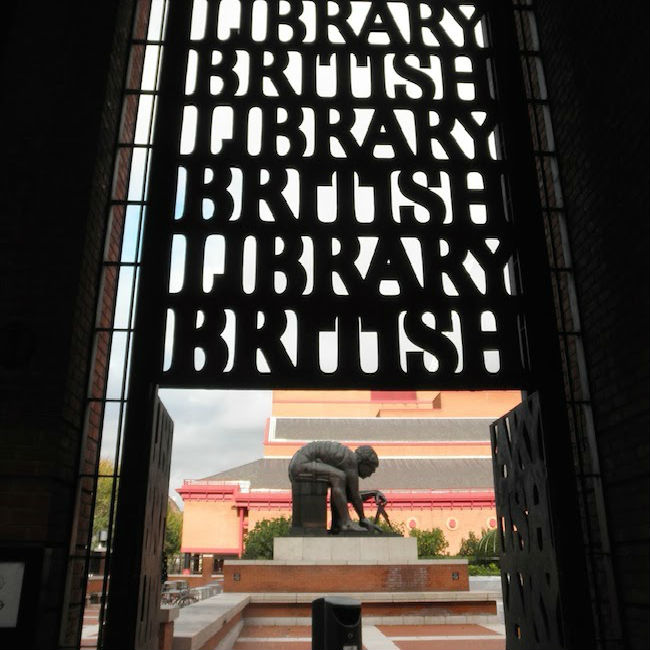Last summer the British Library in London was added to the Statutory List of Buildings of Special Architectural or Historic Interest. The library was built by architect Sir Colin St. John Wilson, with M.J. Long, Douglas Lanham, John Collier and others. In their report of the addition, ArchDaily notes the complicated relationship the British public has had with the piece of brutalist architecture.
The British Library in London’s St. Pancras is often hailed as the only major public building to be built in Great Britain in the twentieth century. “No other project, since the building of St. Paul’s Cathedral over 400 years ago, took so long to construct or was surrounded by so much controversy.” Begun in 1962, completed in 1997, and opened to the public in 1998, the Brutalist building is a world-class a repository of artistic, scholarly and literary treasures. It has now, along with seven other post-war libraries, been given Grade I Listed status for “its soaring and stimulating spaces” which, according to Historic England, have become “much-loved and well-used by scholars and members of the public alike.”
More of the building’s lengthy history can be read at Historic England. Some of the department’s reasons for including the building are of interest to CFile readers:
Architectural interest: for its stately yet accessible modernist design rooted in the English Free tradition with Arts and Crafts and classical influences, crisply and eloquently contextualised by its massing and use of materials which respect and contrast to the St Pancras station and hotel; * Materials: for its level of craftsmanship and skilful handling of a range of materials externally and internally, including Travertine, Portland and Purbeck stone, granite, Leicestershire brick, bronze and American white oak throughout, carefully and meticulously detailed;

Interestingly enough, the word “brutalism” does not appear once in Historic England’s writeup of the library. Maybe this is an effort to avoid controversy? No matter, people like The Guardian’s Olivia Lang were happy to praise it based on that term. For her, the architecture is inseparable from the knowledge the building contains.
It’s a vast, red-brick Brutalist extravaganza, designed by the architect Colin St John Wilson: a gloriously tangible statement on the value of the written word. Consider this cheerful fact: there are approximately 800km of shelving in the British Library as a whole (275km in the extensive basements beneath the Euston building; the remainder at the storage facility in Boston Spa). Together, they house over 150 million items, of which around 2,200 receive conservation treatment each year. Books, mostly, but also newspapers, legal documents, photographs, maps, audio, stamps and scores.
Love contemporary ceramic art + design? Let us know in the comments.




Add your valued opinion to this post.